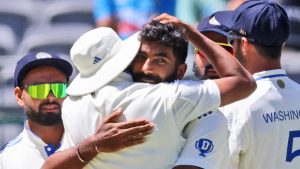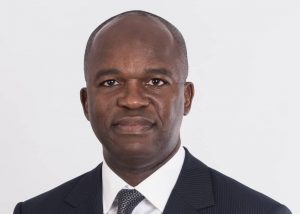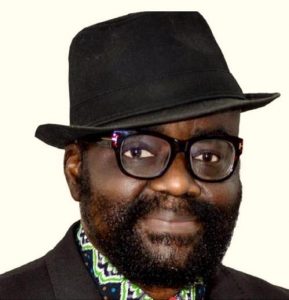“The Last Dance” Michael Jordan documentary: Recap and social media reactions to the first two premiere episodes
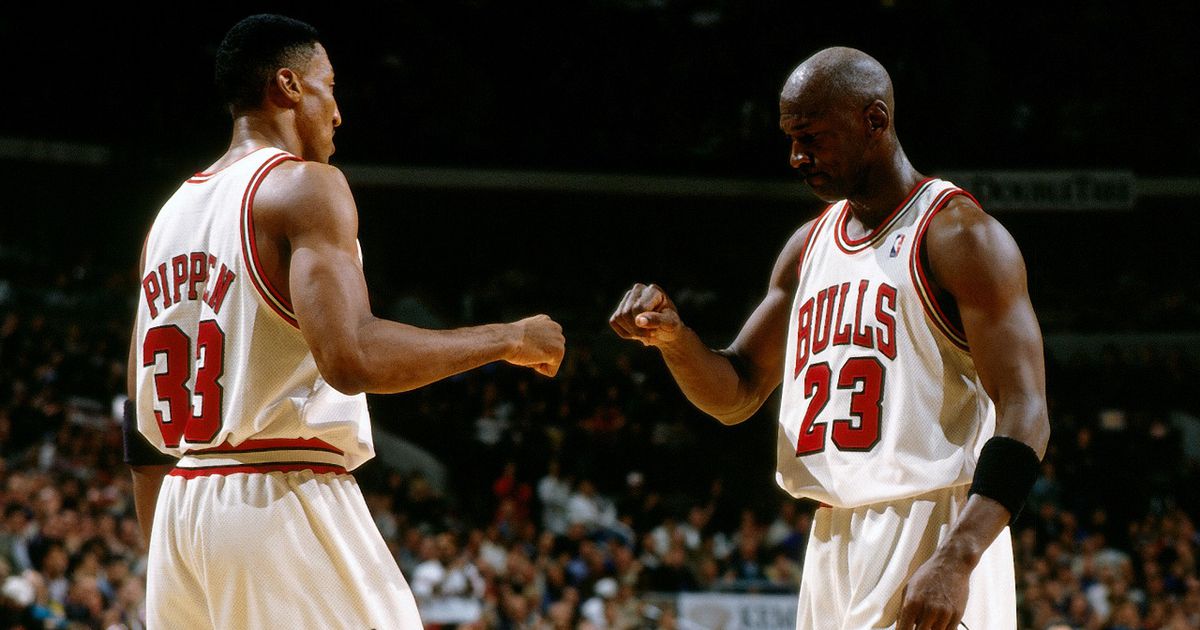
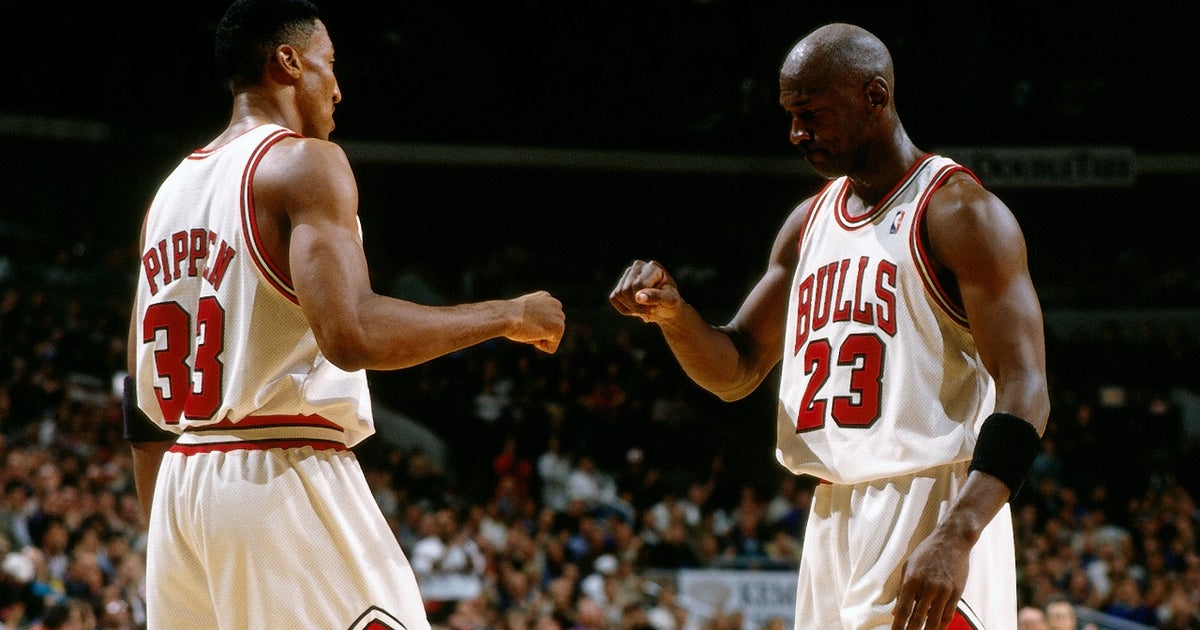
The 1997-98 Chicago Bulls were a team at a crossroads.
Michael Jordan & Co. were coming off their second straight championship — and fifth in seven years — but there were questions about whether this group could run it back and win another.
And that’s where “The Last Dance” begins. The much-anticipated 10-part docuseries premiered with the first two episodes on Sunday night, and the entire internet seemed to come together to watch the behind-the-scenes look at the final year of the Chicago Bulls dynasty, starting from the very beginning.
I hope all those who believe LeBron is better than Michael Jordan are watching this documentary … and these highlights. Lord have mercy. Never been anything like the one and only 23.
— Skip Bayless (@RealSkipBayless) April 20, 2020
“My name is Michael Jordan and I played with the Bulls…”
The least necessary intro on the planet.#TheLastDance— Rachel Nichols (@Rachel__Nichols) April 20, 2020
The opening scenes of Part 1 focused on the challenges facing the Bulls heading into that final season, particularly the prospect of a rebuild and the disconnect between the players, namely Jordan, and general manager Jerry Krause.
How Jerry Krause was looking at MJ pic.twitter.com/U79nnfoSuJ
— Josiah Johnson (@KingJosiah54) April 20, 2020
Space Jam makes more sense when you realize that Jerry Krause looks like Mr Swackhammer pic.twitter.com/gepu7hB3wk
— Charles J. Moore (@charles270) April 20, 2020
Would’ve been FASCINATING if Jerry Krause was alive to defend himself.
— Mike Prada. I have spoken (@MikePradaNBA) April 20, 2020
Biggest takeaway from Episode 1: Bulls owner Jerry Reinsdorf had the audacity to recently say that all the Bulls players except Michael were nearing the end of their careers and that it was time after 1998 to rebuild. WHAT?!?! I WAS THERE. THAT TEAM WOULD’VE WON TWO MORE.
— Skip Bayless (@RealSkipBayless) April 20, 2020
From there, “The Last Dance” turned back the clock to the early 80s, just before Jordan joined the organization — a time when, according to Bulls owner Jerry Reisndorf, the team was being outdrawn by an indoor soccer squad.
At the same time, Jordan was blossoming into a true basketball star at the University of North Carolina. He didn’t join the Tar Heels fully formed; instead, as his coaches and teammates recalled, he soaked up everything he could like a sponge, vowing to become the best player in UNC history:
HOFer James Worthy on when MJ joined UNC: “I was better than he was … for about 2 weeks.” pic.twitter.com/Ks4gl30vyE
— NBA on ESPN (@ESPNNBA) April 20, 2020
“Michael Jordan is the only player that could ever turn it on and off, and he never frickin’ turned it off.” – Roy Williams
— Kevin O’Connor (@KevinOConnorNBA) April 20, 2020
… and, of course, it was mission accomplished on that front. Jordan hit the game winner to seal UNC’s 1982 championship as a freshman, and only got better from there before declaring for the 1984 NBA Draft.
“That gave me the confidence I needed to start to excel at the game of basketball.” – Jordan#TheLastDance pic.twitter.com/s4WZHb8Q9l
— NBA on ESPN (@ESPNNBA) April 20, 2020
Dean Smith telling Michael Jordan to go pro because that’s what was best for him, instead of telling him to stay which would have been best for Dean Smith.
That’s a coach you want to play for.
— JJ Watt (@JJWatt) April 20, 2020
And now the Jordan brand sponsors Georgetown. The man can’t catch a break #TheLastDance https://t.co/ktMq4lqeVw
— Victoria (@AVocalistsRival) April 20, 2020
When Jordan left Chapel Hill, he entered a whole new world — not just as an NBA player. As Jordan tells it in “The Last Dance,” the Bulls teams of his early career were notorious for recreational drug use, particularly cocaine, something Jordan wanted no part of.
— 3030 (@jose3030) April 20, 2020
Both culturally and on the court, Jordan made an immediate impact as a rookie. By his third game against the Milwaukee Bucks, Jordan was already showing glimpses of the legend he would become, helping lead the Bulls back from a nine-point third quarter deficit against a team that previously had Chicago’s number:
1984 TV graphics. pic.twitter.com/DRFrQUNsQo
— ℝ??-ℝ?? ??✌? (@TheNoLookPass) April 20, 2020
Imagine the NBA if MJ had just been … ordinary? ?#TheLastDance pic.twitter.com/pCISyJKjgZ
— ESPN (@espn) April 20, 2020
Magic Johnson saying Jordan was good because of “his balance, his footwork, his fundamentals” is the most Magic Johnson quote possible
— Charlotte Wilder (@TheWilderThings) April 20, 2020
By the end of that rookie season, Jordan’s skill was already capturing the attention of his future rivals — and future Presidents:
“It was like he had an extra levitation gear or something. It just didn’t seem real.” – Isiah Thomas #TheLastDance pic.twitter.com/CrCo7ux3YU
— NBA on ESPN (@ESPNNBA) April 20, 2020
Jordan’s Bulls were an exclusive show ? pic.twitter.com/BOPyWEJEhs
— ESPN (@espn) April 20, 2020
Michael Jordan as a rookie:
▪️ 28.2 PPG, 6.5 RPG, 5.9 APG
▪️ NBA All-Star
▪️ Rookie of the Year#TheLastDance pic.twitter.com/KvV6RV4MCE— NBA (@NBA) April 20, 2020
(And as an aside, the internet loved how President Obama was introduced on the broadcast…)
Former Chicago resident! pic.twitter.com/ehBfxuYwRl
— David Gardner (@byDavidGardner) April 20, 2020
man this is so good hahahah pic.twitter.com/Pu9lzgMiZN
— kelly cohen (@ByKellyCohen) April 20, 2020
From 1985, “The Last Dance” flashed forward back to 1997, as the Bulls took part in an exhibition tour in Paris ahead of the season. Jordan dominated, giving an international audience exactly what it wanted … but when Chicago came home, it was time to get down to business.
According to the documentary, Phil Jackson had a tradition of naming a theme for each season. And for 1997-98, that theme was, well, “The Last Dance.” The team knew this was their last hurrah together, which made winning a sixth championship all the more important.
— Caitlin (@saxetniniltiac) April 20, 2020
Appropriately, then, Part 1 ended with the Bulls receiving their 1997 championship rings and turning the page to their final year … all with that iconic music playing, naturally.
*Sirius by The Alan Parsons Project plays*
Everyone: pic.twitter.com/401EsiZw3y
— SportsNation (@SportsNation) April 20, 2020
as soon as that Bulls starting lineup theme dropped you were already down 10
— Rob Perez (@WorldWideWob) April 20, 2020
I just panicked that it was over and remembered we had another episode and felt like I lost and then found my wallet
— Charlotte Wilder (@TheWilderThings) April 20, 2020
Fortunately, we moved right on to Part 2, which shifted its lens from Jordan to the man who perhaps most helped MJ get to the pinnacle: Scottie Pippen.
In Jordan’s own words, “I didn’t win without Scottie Pippen. That’s why I consider him my best teammate of all time.”
Scottie Pippen was the 122nd-highest-paid player in the NBA in ’97-98, but was easily one of the best players in the league. #TheLastDance pic.twitter.com/CcJ132Nbb8
— ESPN (@espn) April 20, 2020
For those who just thought he was MJ’s sidekick: Scottie Pippen is probably one of the most unique talents ever in the NBA.
— Blake Lovell (@theblakelovell) April 20, 2020
Pippen took a far different route to dynasty than Jordan did. He wasn’t highly recruited, and didn’t necessarily have dreams of playing in the NBA. But he was persistent, and he grew up as an incredibly well-rounded player. The fact that he grew five inches between his freshman and sophomore years of college helped take those guard-based skills and turn Pippen into the Swiss army knife he’d become at the next level.
“He helped me so much in the way I approached the game, in the way I played the game. Whenever they speak Michael Jordan, they should speak Scottie Pippen.”#TheLastDance on ESPN pic.twitter.com/jMMw8AbtqP
— NBA (@NBA) April 20, 2020
Pippen became a sensational player in his own right, but he admitted in “The Last Dance” that he immediately recognized that Jordan was something special. The two formed a fast friendship that became the perfect, complementary relationship on the court:
Man. Scottie Pippen is still underrated.
Him getting more credit because of this thing would be awesome.
One of the league’s best defenders and 20p/7r/6a in the eight years they won their six championships. Ridiculous.
— Eric Nehm (@eric_nehm) April 20, 2020
For all his incredible skill, though, Pippen was incredibly underpaid, due to a long-term deal he signed in 1991, just before league revenue and player salaries took a leap. Pippen felt he had to sign the deal in order to make sure the people in his life were taken care of, and that meant he was locked in on a seven-year deal at $3 million a year:
scottie pippen signed the type of contract you sign when you come from absolutely nothing. he signed for security. he didn’t know ANY better. #TheLastDance
— Aaron West (@oeste) April 20, 2020
Scottie Pippen, in his prime was making under $3 million a year. For comparison’s sake, Otto Porter made $27 million last year ?♂️?♂️
— Aaron Torres (@Aaron_Torres) April 20, 2020
This article from 1997 does a great job of telling the tale and why it wasn’t so easy and how even Reinsdorf warned Pippen not to sign the deal (which was signed in a rush because Scottie was complaining to the media). https://t.co/sQwUXdKEO6
— Over & Back Podcast (@OverAndBackNBA) April 20, 2020
The Jordan Rules gets into a lot of why Scottie was so vastly underpaid. He came up extremely poor, so he craved long-term security/money up front. And then the league’s entire cap structure changed over the course of his deals.
— Chris Herring (@Herring_NBA) April 20, 2020
Because Pippen felt underpaid, he delayed surgery on his problematic back in an attempt to force the front office to renegotiate a deal — and that left the Bulls without Pippen to start the 1997-98 season.
Pippen’s absence exacerbated the Bulls’ issues, giving the two-time defending champions a veneer of vulnerability. As the losses piled up, Jordan came down hard on his teammates and tried to carry the team on his own, on and off the court.
Jordan the motivational speaker pic.twitter.com/T5RubCFvxo
— CJ Fogler (@cjzero) April 20, 2020
Kobe really was just like Mike, man.
— Phillip Barnett (@regularbarnett) April 20, 2020
With Scottie vs. without Scottie#TheLastDance pic.twitter.com/i2OQPfQq0J
— The Ringer (@ringer) April 20, 2020
It’s the Jordan we know: unrelenting, unable to accept losing, competitive to a fault. But where did that Jordan come from?
Part 2 of “The Last Dance” pointed to Jordan’s childhood as the genesis of that fire. His parents pushed him to use his intelligence and drive to earn things in life, not wait for them to be handed to him. But perhaps more importantly, Jordan was driven to competition by sibling rivalry. He fought with his brother, both physically and for his father’s attention.
Hi. #TheLastDance pic.twitter.com/iZ9W0o0gJz
— Cassidy Hubbarth (@CassidyHubbarth) April 20, 2020
mj was bad with tools and wanted his dad to love him so he went out and became the best hooper in history lmfao psychology is wild
— Aaron West (@oeste) April 20, 2020
Vulnerable Michael Jordan is an absolutely wild thing to see
— Bill DiFilippo (@billdifilippo) April 20, 2020
Then, as you almost certainly know, Jordan failed to make his high school basketball team, which further stoked that competitive flame. And from that crucible, Michael Jordan was formed.
The Bulls got their first real taste of that legendary competitiveness in Jordan’s second season, when he suffered a broken foot. Unknown to the team, Jordan got back to playing basketball as quickly as he could — 90 minutes a day, by his own admission — which left the calf on the leg of his injured foot stronger than on his uninjured leg. He insisted that he come back for the Bulls, regardless of the risk:
“Depends how f—ing bad the headache is!”
Classic Michael Jordan from Ep. 2 of #TheLastDance pic.twitter.com/npjnb2Trju
— SportsCenter (@SportsCenter) April 20, 2020
Can’t imagine a player taking that approach, either. https://t.co/JKZXew3xeI
— Hardwood Paroxysm (@HPbasketball) April 20, 2020
The two sides reached a compromise: Jordan would play seven minutes per half, and absolutely no more. So for 14 minutes, Jordan went “absolutely ballistic” in the most important moments of each game. It seemed to work, until a late-season game against the Indiana Pacers. With just 13 seconds remaining and the Bulls down 1, Jordan had reached his limit, and then coach Stan Albeck refused to put him back in.
John Paxson hit the game winner, but the damage was done. Jordan believed the organization had prioritized losing and the prospect of a better draft pick over doing everything to make the postseason. From that point on, the relationship between the Bulls front office and its star player would never be the same.
We’ve gotta do something about this tanking! pic.twitter.com/ll6fW37c77
— Tankathon.com (@tankathon) April 20, 2020
One thing we know with the benefit of hindsight: the Bulls did not miss a thing by not being in the 1986 lottery. That went down as a notoriously underperforming draft, most notable for the tragic death of Len Bias. (Lottery was top 7 picks back then) https://t.co/sVXpb0N3Ny
— J.A. Adande (@jadande) April 20, 2020
Yet the Bulls did make the postseason, drawing a first-round matchup with the fabled Boston Celtics. And in Game 2 of that series, His Airness poured in 63, prompting Larry Bird to compare Jordan to, well, God.
“Our whole thing was just do what we can do to hold Michael down, but you don’t hold the great ones down.”
“That wasn’t Michael Jordan out there, that was God disguised as Michael Jordan.” – Larry Bird#TheLastDance on ESPN pic.twitter.com/CUFr6nB5R3
— NBA (@NBA) April 20, 2020
And it was all Danny Ainge’s fault.
A mistake. pic.twitter.com/0hRw2iJBsR
— 3030 (@jose3030) April 20, 2020
“I talked some trash to him that day – that might have been a mistake.” – @danielrainge ?#TheLastDance
— Rachel Nichols (@Rachel__Nichols) April 20, 2020
Ainge probably planted the seeds for baseball by mentioning being a two-sport athlete, and MJ had to win that too
— Blake Murphy (@BlakeMurphyODC) April 20, 2020
Little different game then: Bulls scored 131 points in MJ’s 63-point game at Boston Garden, lost in double OT, and as a team they went … 0 for 2 from 3-point range in the game.
— Tim Reynolds (@ByTimReynolds) April 20, 2020
Of course, we couldn’t get through a Michael Jordan documentary without a LeBron comparison or two…
Nahhhh bron having 90 every game that series no cap ???? thats on everything im sorry
— Mikal Bridges (@mikal_bridges) April 20, 2020
But anyway, back to the Bulls! With Jordan proving his prowess, Chicago needed to make some changes in order to become a title contender. Krause moved one of Jordan’s closest confidantes, Charles Oakley, to the Knicks for Bill Cartwright, giving the Bulls a big man presence they desperately needed. Those moves led to the first three-peat, proving that Krause knew what he was doing when it came to making the team better.
In 1997-98, however, that meant kicking the tires on trades for Pippen. Krause wanted to make the move to extend the Bulls’ window beyond 1998, but ownership and the players were adamant that Pippen wasn’t going anywhere. He stayed, but things got personal between Krause and Pippen, the latter of whom openly took shots at and ridiculed the Chicago GM.


